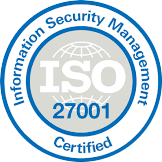Unpacking Cyber Resilience and IAM Resilience:
As enterprise leaders shift focus from purely defensive security postures to building resilience against cyber events, it becomes essential to delve into the nuances of Cyber Resilience and IAM Resilience. This approach ensures not only robust defense but also the ability to adapt and recover, maintaining business continuity in the face of digital threats.
What is Cyber Resilience?
Cyber resilience according to NIST represents an organization’s capability to proactively defend against, aptly react to, and recover from cyber threats. This ensures uninterrupted business operations and the safeguarding of vital data assets.
And MITRE, which developed the Cyber Resiliency Engineering Framework in 2011, describes cyber resiliency as the need “for information and communications systems and those who depend on them to be resilient in the face of persistent, stealthy, and sophisticated attacks focused on cyber resources.
Over the past decade this concept has been gaining traction and is becoming a topic of board-level interest as the volume, variety, and intensity of strikes by bad actors spikes year after year.
It has evolved to encompass building systems that can anticipate and withstand cyber threats, not just defend against them. As demonstrated by Symantec’s experience, designing systems to scale and handle unexpected demand or attacks is a prime example of true resilience.
Cyber Resilience has three foundational pillars:
- Risk Management:
Identifying and evaluating potential threats and vulnerabilities lurking within your infrastructure. - Incident Response:
Designing and implementing action strategies to combat cyber threats. - Recovery:
Swift restoration of systems and data after a breach or attack.
In addition to these pillars, modern cyber resilience strategies often incorporate elements like:
- Adaptation:
The ability to learn from past incidents and adapt strategies accordingly, improving defenses against future threats. - Proactive Defense:
Implementing proactive measures like regular security audits, vulnerability assessments, and penetration testing to identify and address risks before they are exploited. - Business Continuity Planning:
Ensuring that critical business functions can continue during and after a cyber incident. - Awareness and Training:
Educating employees about cybersecurity best practices to prevent breaches caused by human error.
It’s essential to tailor these pillars and additional elements to the specific needs and context of your organization to build a robust and effective cyber resilience strategy.
What is IAM Resilience?
Identity and Access Management (IAM) Resilience signifies the ability of an IAM system to sustain its functionality under changing or challenging circumstances.
This could include situations like cyber threats, physical disasters, or regular system upgrades or changes.
Central to achieving IAM resilience and security is the Shared Responsibility Model (SRM), which distinguishes security duties between the Cloud Service Provider (CSP) and the customer within a Software as a Service (SaaS) context.
In this model, the CSP is responsible for securing core elements of the cloud, encompassing the infrastructure, hardware, and physical facilities. Meanwhile, the customer’s responsibility primarily lies in safeguarding their data, managing their configurations, and implementing secure IAM protocols within the cloud-based applications they utilize.
Broadly, IAM resilience pivots on:
1. Operational Resilience:
Directly tied to managing user identities and access.
It comprises:
- Authentication: The robust mechanisms in place for reliably verifying user identities even under adverse conditions.
- Access Management: The system’s ability to accurately control and adjust access permissions according to the principle of least privilege and quickly respond to changes in user status or roles.
2. Infrastructure Resilience:
Undergirding operational functions to ensure consistency.
It involves:
- Fault Tolerance and Redundancy: The system’s ability to handle failures without causing a complete system breakdown, enabled by backup systems, data replication, and other fail-safe mechanisms.
- Data Integrity and Security: The measures in place to ensure the accuracy, consistency, and protection of stored identity and access data.
- Scalability and Performance: The capacity of the system to handle increased load and provide the same level of service as the organization grows and changes.
- Disaster Recovery and Business Continuity Planning: The system’s readiness to recover from major incidents or disasters, supported by adequate backups, recovery procedures, and business continuity plans.
In essence, IAM resilience goes beyond simply managing identities and access; it encompasses a robust infrastructure designed to support these operations under all circumstances, reflecting a comprehensive approach to cyber resilience.
The Relationship Between IAM Resilience & Cyber Resilience
IAM, in a nutshell, is the gateway for users to access company assets.
It has the ability to block intrusions and halt breaches.
However, hackers are finding ways to beat these systems by manipulating human behavior, hence bypassing defenses. They can also create more backdoors by injecting malicious code into systems. So, IAM can’t shield from these types of attacks on its own. It requires more robust processes like user training, monitoring, and ensuring code security.
A new study tells us that 84% of organizations experienced an identity-related breach in the last year, according to the Identity Defined Security Alliance (IDSA), a nonprofit that provides vendor-neutral resources to help organizations reduce the risk of a breach by combining identity and security strategies.
IAM is a single point of failure and as cyber threats continue to evolve, the focus on identity as the new security perimeter is intensifying – and we promise it’s not a trend.
Businesses adopting an Identity-First Security strategy with resilient IAM systems are likely to be better equipped to face these threats head-on by effectively reducing the impact and effectiveness of attacks, and maintaining a secure, compliant and efficient operation.
The Urgency of Cyber and IAM Resilience
The increasing cyber threats highlight the urgency for robust Cyber and IAM resilience frameworks.
Adopting resilient frameworks is essential for organizations to anticipate and recover from attacks, ensuring uninterrupted operations.
Recent data offers sobering insights into the digital landscape:
- According to the 2023 Data Breach Investigations Report just over 60% of all breaches are credential related, either stolen, or hacked with brute force, or tampered with via social engineering.
With the rise of remote work, businesses have experienced a rise in access to critical business systems by nearly 60% in the last year, and with the average of roughly 50 mission-critical applications per business, over 55% of these applications are accessed on mobile devices. - According to the 2020-IAM-Identity-Access-Management-Report by Simeio the negative impact reported by organizations that experienced unauthorized access to sensitive systems and data was system downtime (23%) had the biggest business impact.
This was closely followed by disrupted business activities (22%) and increased helpdesk load (21%), Reduced employee productivity(20%) Deployment of IT resources to triage and remediate issue (17%), Data loss (16%) Negative publicity/ reputational damage (13% )
In a world brimming with evolving cyber threats, the ripple effects on business continuity are manifestly apparent, spanning financial losses, brand reputation erosion, jeopardized customer data, and hindered employee productivity.
The message is clear: robust Cyber and IAM resilience frameworks are no longer optional – they are foundational to safeguarding an organization’s digital heartbeat.
Insights and Perspectives: Board Level Concerns
Aligning with board-level interest in cyber resilience, organizations should adopt a holistic cybersecurity approach.
This includes integrating AI and machine learning, conducting regular audits, and ensuring employee training is part of a comprehensive cyber resilience strategy.
Organizations must adopt a holistic approach to cybersecurity, addressing all components to ensure maximum protection. The integration of AI and machine learning in both cyber resilience and IAM resilience can enhance threat detection, response times, and overall security.
Regular audits and assessments can also help organizations identify gaps in their cyber and IAM resilience, ensuring continuous improvement and adaptation to the evolving threat landscape.
Ensuring that employees are knowledgeable about cybersecurity best practices and potential threats can significantly improve an organization’s overall cyber resilience and IAM resilience.
Enhancing Cyber Resilience with IAM Resilience
Enhancing IAM resilience is not just about protecting a system; it’s about securing the central hub of your organization’s digital operations.
Building a resilient digital infrastructure is vital for today’s enterprises. Embracing strategies to enhance IAM resilience secures the core of your organization’s digital operations, establishing a future-ready, resilient enterprise



